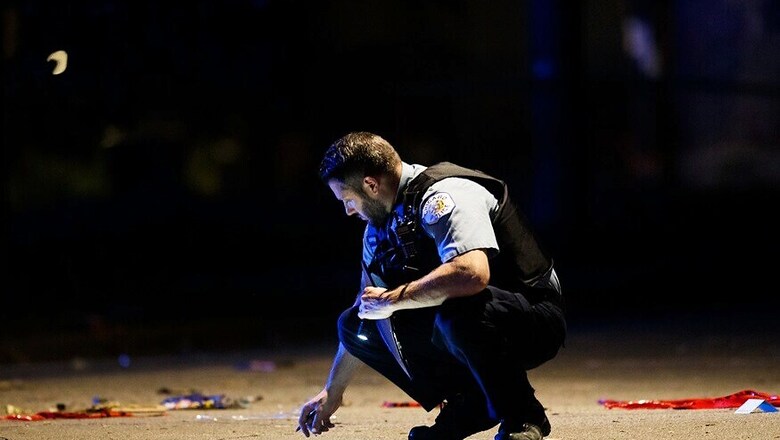
views
One of Chicago's bloodiest holiday weekends in memory ended with 17 people fatally shot, including a 7-year-old girl and a 14-year-old boy, and 70 more wounded, despite a concerted effort to quell the violence with an additional 1,200 police officers on the streets.
The violence was far worse than last year, when the long July Fourth weekend ended with six people dead and 66 wounded in gunfire. And the holiday weekend of violence follows Chicago's deadliest Memorial Day weekend since 2015.
After a relatively peaceful Friday, gunfire erupted around 7 p.m. Saturday. Seven-year-old Natalia Wallace was standing on the sidewalk outside her grandmother's house on the city's West Side during a Fourth of July party when, according to police, suspects climbed from a car and opened fire. The child was shot in the head.
“Bullets just came from nowhere,” Natalia’s grandmother, Linda Rogers, told the Chicago Tribune on Sunday. “I came out here and my grandbaby (was) lying on the ground.”
Natalia's death came amid a spate of shootings around the United States that left several children dead, including a 6-year-old boy in San Francisco, a 6-year-old boy in Philadelphia,an 8-year-old girl in Atlanta, an 11-year-old girl in Columbia, Missouri, and 8-year-old boy in Hoover, Alabama.
Chicago Police said detectives used technology to find the gunman's vehicle, and they arrested the one man who was sitting inside. The man had not been charged in Natalia's death as of Monday morning and his name was not released. The department did not immediately know how many, if any, arrests have been made in the other weekend homicides.
About three hours after Natalia was shot, a group of young men police believe are members of a gang jumped from a vehicle in the Englewood neighborhood on the city's South Side and opened fire on a rival gang member.
“They shot and killed him and they stand over him and keep shooting” before jumping back in the car and fleeing the scene, Deputy Chief Brendan Deenihan told reporters Monday morning.
But a child, 14-year-old Vernado Jones Jr., was nearby and one of the bullets fired at the man who was killed struck Vernado in the armpit.
“He had nothing to do with gang-on-gang violence. He was not the intended target,” Deenihan said.
A visibly upset and angry Police Superintendent David Brown lamented the growing roster of children who fall victims to gun violence.
“We cannot allow this to be normalized in this city,” he said. “We cannot get used to hearing about children being gunned down in Chicago every weekend.”
This year, the department counted the July Fourth weekend shootings from 6 p.m. Thursday through the end of Sunday. In all, 13 children under the age of 18 were shot, including the two that died.
The weekend violence highlighted what has been a particularly dangerous year for children in the city. Police statistics show there have been 32 homicide victims under the age of 18 so far in 2020 compared to 20 during the same period in 2019.
A week earlier, Chicago's shooting victims included a 1-year-old boy riding in a car with his mother and a 10-year-old girl who was shot by a bullet fired a block away that pierced a window and struck her in the head as she sat on a couch at home.
Chicago has counted a total of 1,782 shooting victims this year, 550 more than during the same period last year. And the weekend brought the number of homicides for the year to 353, which is 99 more than were recorded for the same period last year.
As he did after the Memorial Day weekend, Brown put much of the blame for the spasms of gunfire on a criminal justice system that fails to keep violent offenders behind bars and a program in which many of those arrested — including those arrested on gun charges — are released from custody after being fitted with electronic bracelets that are designed to monitor their whereabouts.
“It's clearly not working,” he said.
Brown also pointed to a drastic reduction in the number of inmates at the county jail, which he said has left Chicago and other communities at greater risk of becoming victims of crimes. Even before the pandemic prompted the release of more than 1,600 detainees between May and June of this year, an order to judges to set bail only in amounts that defendants could afford, resulted in a reduction in the jail's population by 1,500 in 2017 alone.
“We must keep violent offenders in jail longer,” he said.




















Comments
0 comment